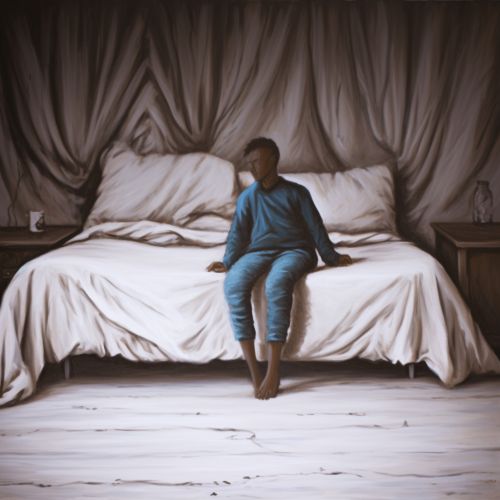Restless Legs Syndrome
Overview
Restless Legs Syndrome (RLS), also known as Willis-Ekbom disease, is a neurological disorder characterized by an irresistible urge to move one's body to stop uncomfortable or odd sensations. It most commonly affects the legs, but can also affect the arms, torso, and even phantom limbs. Moving the affected body part modulates the sensations, providing temporary relief.
Symptoms
The hallmark symptom of RLS is a compelling urge to move the legs that is often accompanied by uncomfortable sensations. These sensations, which generally occur within the limb rather than on the skin, are described as crawling, creeping, pulling, throbbing, aching, itching, and electric. The sensations range in severity from uncomfortable to irritating to painful.
The urge to move the legs is usually accompanied by uncomfortable sensations. Some people describe these sensations as aching, tingling, or crawling feelings. The sensations are usually worse at rest, especially when lying or sitting, and can lead to sleep deprivation and stress. The severity of RLS symptoms ranges from mild to intolerable. Symptoms can come and go and severity can also vary. The symptoms are generally worse in the evening and at night. For some people, symptoms may cause severe nightly sleep disruption that can significantly impair their quality of life.
Causes
The cause of RLS is generally unknown. However, it is believed to be related to abnormalities in the dopaminergic system, which controls automatic movements. It has been found that iron deficiency and varicose veins condition can cause RLS. Certain medications and pregnancy can also trigger the condition. It is also believed to be genetic as it is common in people with a family history of the condition.
Diagnosis
There is no specific test for RLS. The condition is diagnosed through a clinical evaluation based on the patient's description of symptoms and the clinical rule that the symptoms are worse at night and at rest and are temporarily improved by activity. A neurological and physical examination, blood tests, and sometimes, a sleep study may be conducted to rule out other conditions and support the diagnosis of RLS.
Treatment
Treatment of RLS is targeted at reducing symptoms. Medications used in treatment may include dopaminergic agents, benzodiazepines, opioids, and anticonvulsants. Iron supplementation is used if iron deficiency is found. Lifestyle changes such as regular exercise, maintaining regular sleep patterns, and the elimination of caffeine, alcohol, and tobacco can also help manage symptoms.


Epidemiology
RLS affects approximately 2.7–10% of the general population. It affects both genders, but is more common in women and may start at any age, even in young children. However, most people affected are middle-aged or older.
